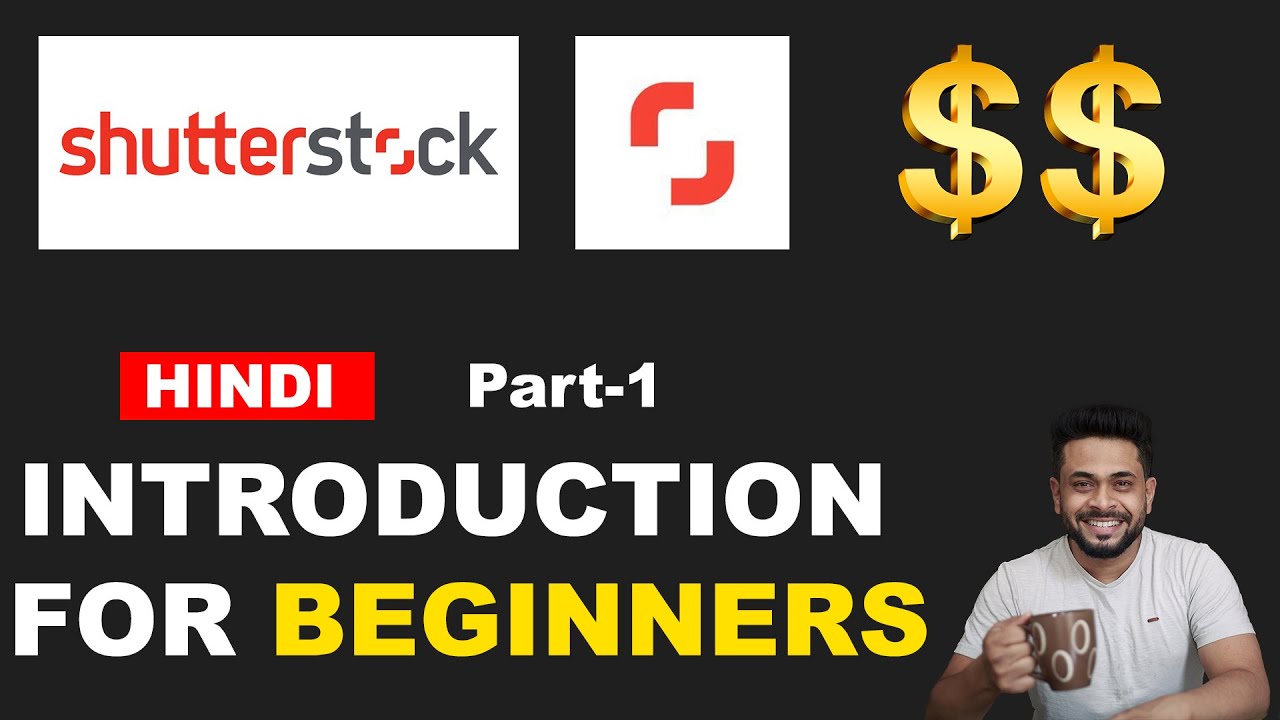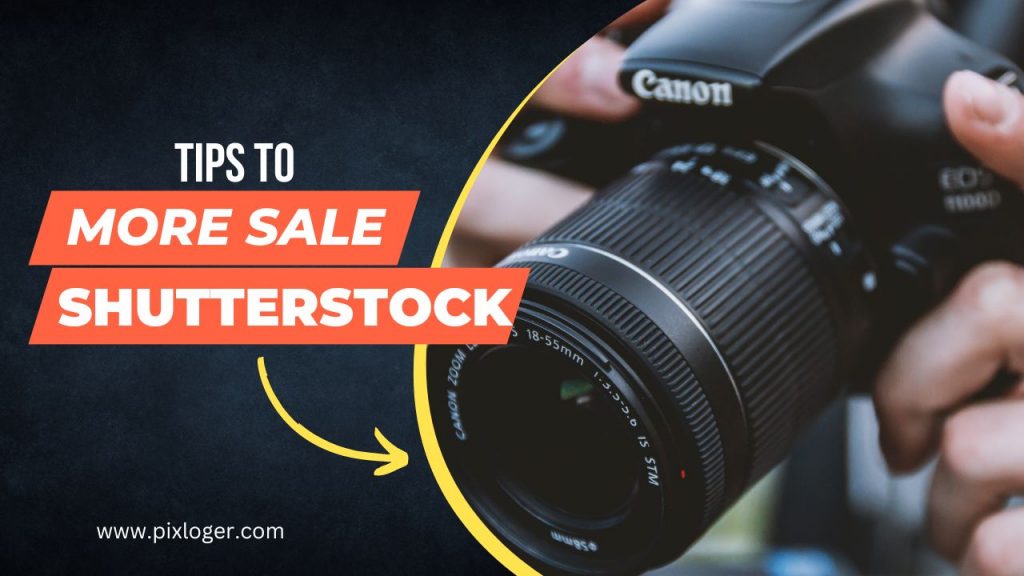Looking to turn your photography, illustrations, or videos into a steady income stream? Shutterstock is a fantastic platform for creators just like you to showcase your work and earn money. Whether you’re a hobbyist or a professional, getting started might seem overwhelming at first, but don’t worry! In this guide, we’ll walk through the basics of making money on Shutterstock, from understanding how the platform works to tips on maximizing your earnings. It’s easier than you think to monetize your creative talents—so let’s dive in and get you started on your
Understanding Shutterstock and Its Revenue Model

Shutterstock is one of the largest online marketplaces for royalty-free images, videos, music, and illustrations. It connects creators with millions of buyers worldwide, making it a prime platform for earning income from your creative work. But how exactly does Shutterstock make money, and how do creators like you fit into the picture?
At its core, Shutterstock operates on a royalty-based revenue model. Here’s how it works:
- Uploading Content: You upload your high-quality images, videos, or other media to Shutterstock. The platform reviews your submissions to ensure they meet quality standards.
- Licensing Your Work: When someone purchases a license to use your content, Shutterstock earns revenue by selling subscription plans or individual licenses.
- Sharing Revenue with Creators: A portion of the earnings from each license sold is paid out to you as a contributor. The percentage you receive depends on your contributor level and the type of license.
Shutterstock offers different ways for contributors to earn:
| Type of Earnings | Description |
|---|---|
| Standard License | Most common license, granting broad usage rights for images and videos. |
| Enhanced License | Allows for higher-volume uses and gives buyers broader rights, resulting in higher payouts. |
| Subscription Revenue | Earned when customers buy credits or subscribe, leading to recurring income for contributors. |
Understanding this model is key to maximizing your earnings. The more popular and in-demand your content is, the more you’ll earn from each sale or license. Plus, Shutterstock’s global reach means your work can be purchased by clients from all over the world, increasing your earning potential. So, getting familiar with how the platform operates and how revenue is generated sets a solid foundation for your success as a Shutterstock contributor.
Steps to Get Started with Shutterstock as a Contributor

Ready to jump into the world of stock photography and start earning money? Getting started on Shutterstock is pretty straightforward, and I’ll walk you through each step so you can begin your journey confidently.
Step 1: Sign Up as a Contributor
First things first, head over to Shutterstock’s contributor registration page. You’ll need to fill out some basic info like your name, email, and create a password. Once you submit your info, Shutterstock will review your application, which usually takes a few days.
Step 2: Understand the Content Guidelines
Before uploading anything, take some time to read Shutterstock’s content guidelines. They have specific rules about what kind of images and videos are acceptable—like no copyrighted logos, offensive content, or poorly composed shots. Familiarizing yourself with these rules helps ensure your submissions aren’t rejected.
Step 3: Prepare Your Portfolio
While you wait for approval, start preparing your best work. Focus on creating a diverse collection of high-quality images or videos that fit current trends or niche markets. Think about what buyers might be searching for—such as business scenes, nature, technology, or lifestyle shots.
Step 4: Upload Your Content
Once approved, you can log into your contributor account and start uploading. Shutterstock allows you to upload images, videos, and vectors. Make sure to add descriptive titles, clear tags, and detailed descriptions—these help your content get discovered in searches. High-quality previews and proper categorization make a big difference.
Step 5: Set Your Earnings and Monitor Performance
Shutterstock offers a royalty-based earning system. As your images get downloaded, you earn a percentage of the sale. You can track your downloads and earnings through your dashboard. Keep an eye on which types of content perform best, so you can focus on creating more of what sells.
Step 6: Keep Uploading and Improving
Consistency is key! Regularly upload fresh content and pay attention to trending topics. The more high-quality, relevant content you contribute, the higher your chances of making steady income. Don’t be discouraged by initial rejections—review the feedback, improve your work, and keep going!
Tips for Creating High-Quality Stock Photos and Videos

Now that you’re all set to upload, the next thing is making sure your content stands out. Creating high-quality stock photos and videos isn’t just about good camera gear—it’s about technique, creativity, and understanding what buyers want.
1. Focus on Technical Quality
- Use good lighting: Natural light is often best, but if shooting indoors, invest in softbox lights or ring lights to get even illumination.
- Sharpen your focus: Make sure your main subject is crisp and clear. Blurry or out-of-focus shots won’t sell.
- Maintain proper exposure: Avoid overexposed highlights or underexposed shadows. Use your camera’s histogram to get it right.
2. Composition Matters
Follow classic principles like the rule of thirds, leading lines, and balanced framing. Think about the story your photo or video tells. A well-composed shot draws viewers in and makes it more appealing for buyers.
3. Capture Relevance and Trends
Stay updated on current trends—think remote work, sustainable living, or new technologies. Incorporate these themes into your content to increase its marketability.
4. Be Authentic and Natural
People love authentic moments. Candid shots or natural expressions tend to perform better than overly staged setups. For videos, consider capturing real-life interactions and genuine emotions.
5. Use Proper Equipment
You don’t need the most expensive gear, but a decent camera and good lenses can make a noticeable difference. For videos, stabilize your shots with a tripod or gimbal to ensure smooth footage.
6. Edit Thoughtfully
Post-processing should enhance your image or video without overdoing it. Adjust brightness, contrast, and color balance to make your work pop. Avoid heavy filters unless they serve a specific creative purpose.
7. Maintain Consistency
Develop your unique style and stick to it. Consistent branding helps you stand out and makes your portfolio more cohesive, which can attract repeat buyers.
Remember, creating stock content is a mix of art and strategy. Keep practicing, learn from feedback, and stay updated on market needs. Over time, your efforts will pay off as you build a portfolio that consistently brings in income!
Optimizing Your Content for Better Visibility and Sales

So, you’ve uploaded some great images and videos to Shutterstock—awesome! But here’s the thing: just uploading isn’t enough. To really boost your sales and get your content in front of more buyers, you need to optimize your submissions. Think of it as giving your work a little extra boost so it stands out in a crowded marketplace.
First up, use relevant and descriptive keywords. Shutterstock relies heavily on search terms, so the more accurate and specific your keywords are, the easier it is for buyers to find your content. For example, instead of just tagging a photo as “nature,” add tags like “mountain landscape,” “sunset over forest,” or “hiking trail.” Be detailed and precise.
Second, pay attention to your titles and descriptions. Make them clear, engaging, and rich with relevant keywords. Instead of a vague title like “Beautiful View,” try “Sunset Over Mountain Range with Vibrant Colors.” Your description should complement the keywords, providing context and highlighting what makes your content special.
Third, choose the right categories. Shutterstock offers various categories—make sure you pick the most relevant one for each piece. Proper categorization helps the right buyers find your work faster.
| Optimization Tip | Why It Matters |
|---|---|
| Use specific keywords | Increases searchability and visibility |
| Craft detailed titles and descriptions | Provides context and improves discoverability |
| Select appropriate categories | Ensures your content is shown to the right audience |
Finally, keep an eye on your analytics if Shutterstock provides any. Pay attention to which keywords lead to more views or sales and adjust your tags and descriptions accordingly. Consistently refining your approach can significantly improve your content’s performance over time.
Remember, optimization is an ongoing process. The more effort you put into making your content discoverable, the more potential sales you’ll generate. So take that extra time—it can really pay off!
Strategies to Increase Your Earnings on Shutterstock
Looking to grow your income on Shutterstock? Great! It’s not just about uploading a bunch of images and hoping for the best. There are smart strategies you can adopt to maximize your earnings and build a steady stream of income. Let’s explore some of the most effective ones.
1. Consistency is Key: Regularly upload new content. The more high-quality images and videos you add, the better your chances of being discovered by buyers. Plus, consistent uploaders often perform better in Shutterstock’s algorithms, giving your portfolio more visibility.
2. Focus on Popular and Trending Topics: Keep an eye on current trends and hot topics. For example, if eco-friendly living, remote work, or specific holidays are popular, create content around these themes. Buyers are often searching for fresh, trending content, so tapping into these can boost your sales.
3. Diversify Your Portfolio: Don’t put all your eggs in one basket. Upload a variety of content—photos, vectors, illustrations, videos—covering different niches and styles. This broad approach attracts a wider audience and increases your chances of getting sales across multiple categories.
4. Price Your Content Strategically: While Shutterstock has set pricing, pay attention to your upload quality and licensing options. Sometimes offering exclusive content or higher-resolution files can command better prices, leading to higher earnings per download.
5. Engage with the Shutterstock Community: Join forums, social media groups, or communities of other contributors. Sharing tips and learning from others can provide valuable insights and motivation. Sometimes, collaborations or feedback can lead to improved content that sells better.
6. Promote Your Portfolio Outside Shutterstock: Use social media, personal websites, or blogs to showcase your best work. While Shutterstock traffic is a big source, outside promotion can drive additional viewers and customers to your portfolio.
7. Monitor Your Performance and Adapt: Regularly review your sales data. Which images sell best? Which keywords are most effective? Use this information to refine your strategy. Adjust your content creation and tagging to align with what buyers are looking for.
By applying these strategies, you’re setting yourself up for increased earnings. Remember, building a successful Shutterstock portfolio takes time and effort, but with persistence and smart tactics, you can turn your creative talents into a reliable income stream.
Common Challenges and How to Overcome Them
Starting out on Shutterstock as a new contributor can be exciting, but it’s not without its hurdles. One of the most common challenges is standing out in a sea of talented photographers and designers. With millions of images available, getting noticed can feel overwhelming at first. Don’t worry—there are ways to navigate this.
Another challenge is understanding the platform’s quality standards. Shutterstock has strict requirements for technical quality, composition, and relevance. If your images get rejected, it can be disheartening, but it’s part of the learning process. Carefully review rejection reasons and use them as feedback to improve your future submissions.
Pricing and earning potential can also be tricky. Many beginners expect quick, high earnings but find that building a steady income takes time and consistency. It’s important to set realistic expectations and focus on creating a diverse portfolio that appeals to various buyers.
To overcome these challenges, consider these tips:
- Research trending topics and styles: Keep an eye on popular categories and emerging trends to tailor your content accordingly.
- Invest in learning and improving your skills: Take online courses, watch tutorials, and analyze top-selling images to understand what works.
- Maintain consistency: Regularly upload new content to increase your chances of being discovered.
- Pay attention to technical details: Ensure your images are high-resolution, properly exposed, and free of noise or distractions.
- Engage with the community: Join forums or social media groups for tips, feedback, and support from other contributors.
Remember, setbacks are normal. Patience and persistence are your best allies. Over time, you’ll refine your craft and develop an eye for what sells, making the journey more rewarding and less stressful.
Final Tips for Success as a Shutterstock Contributor
If you’re serious about turning your creative work into a sustainable income on Shutterstock, here are some final tips to set you on the right path:
- Focus on quality over quantity: While uploading frequently helps, prioritize creating high-quality, compelling images that stand out.
- Diversify your portfolio: Cover various themes, styles, and formats—photos, vectors, illustrations—to appeal to a broader audience.
- Optimize your keywords: Use relevant, specific keywords for each image. Think like a buyer—what would they search for? Use multiple languages if possible to reach international markets.
- Stay updated on trends: Follow industry blogs, social media, and Shutterstock’s blog to keep your content current and relevant.
- Be patient and persistent: Earnings may take time to build. Keep uploading, learn from feedback, and don’t get discouraged by slow growth.
Additionally, consider these bonus tips:
| Tip | Why It Matters |
|---|---|
| Maintain consistency | Regular uploads keep your portfolio fresh and increase visibility in search results. |
| Engage with the community | Networking can provide valuable insights, collaborations, and motivation. |
| Review your analytics | Use Shutterstock’s analytics tools to see what performs well and refine your strategy accordingly. |
Ultimately, success on Shutterstock isn’t just about making quick money—it’s about building a brand and a portfolio that continuously attracts buyers. Stay passionate, keep learning, and enjoy the creative journey. With dedication, you’ll find your niche and start generating a steady stream of income from your images.

